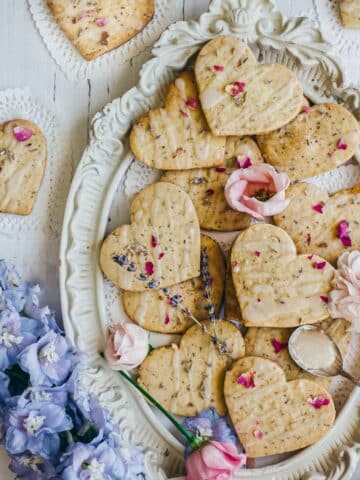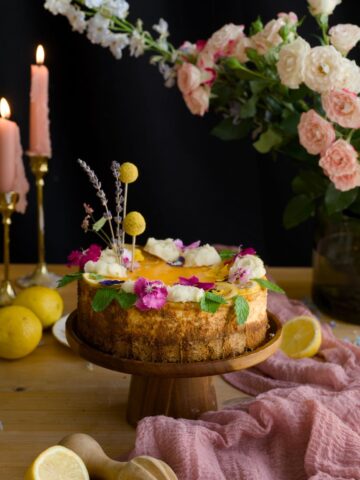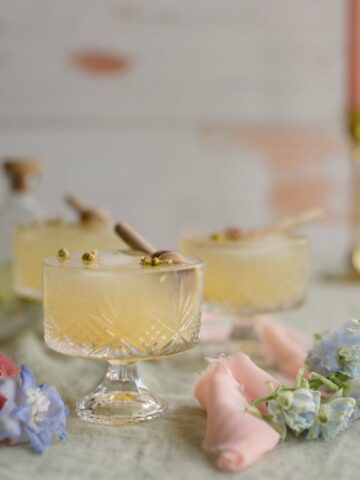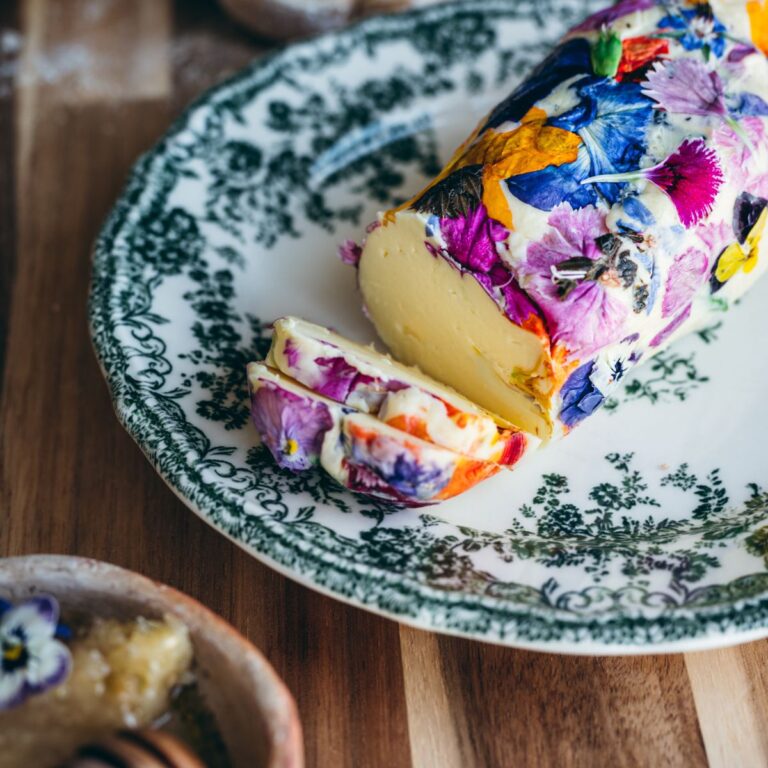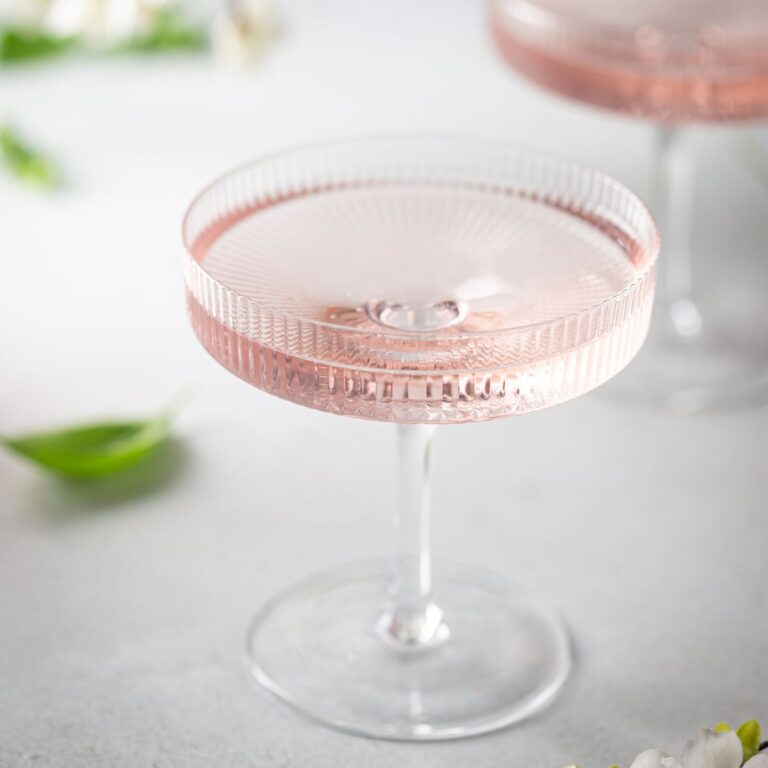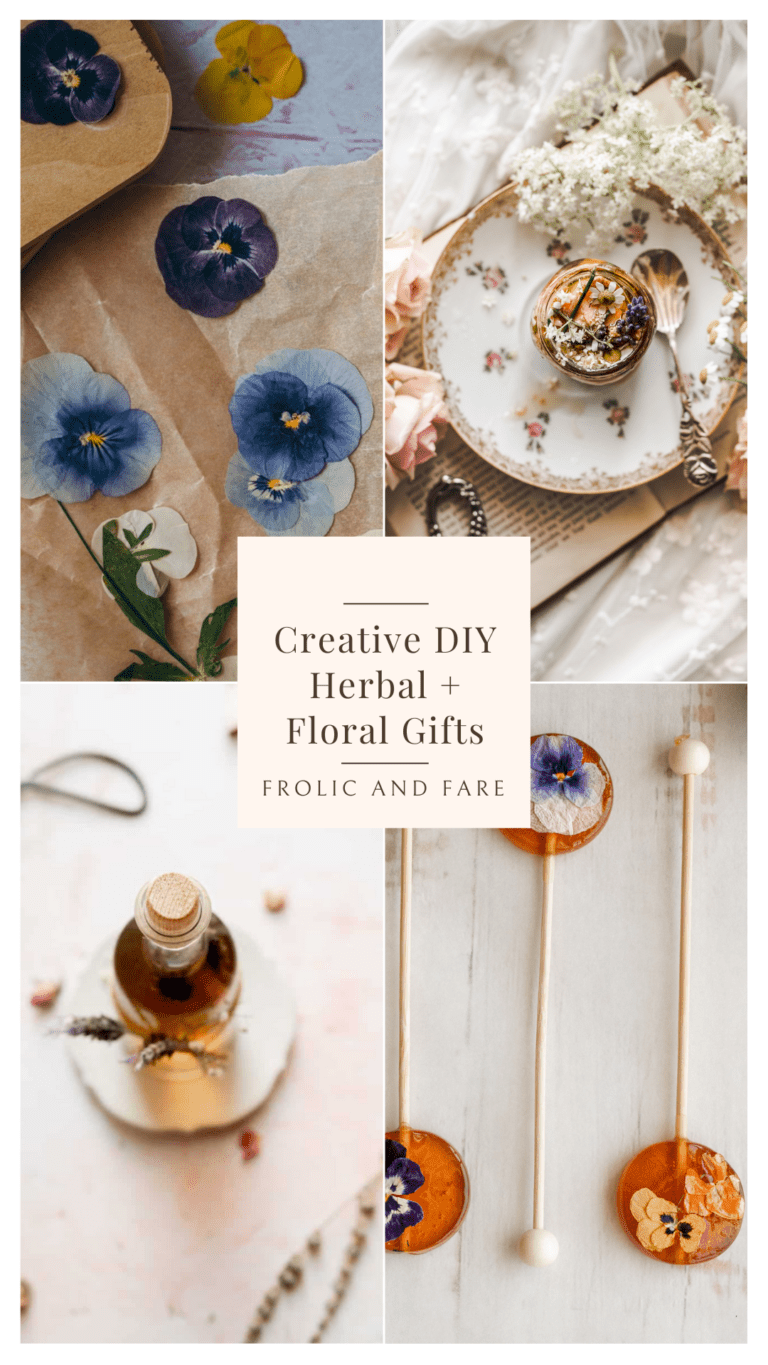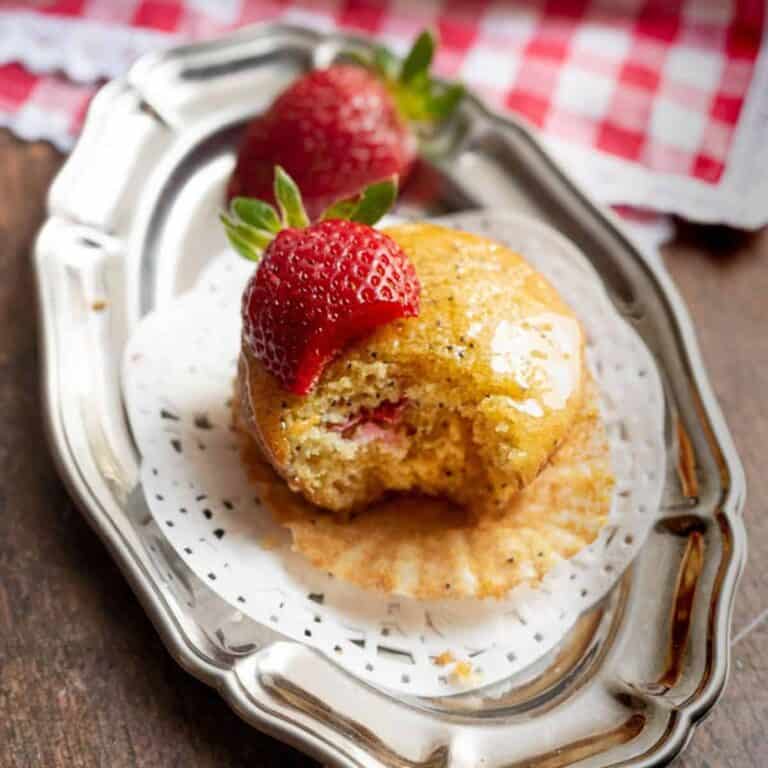Edible flowers to grow in your garden
Want to know where to find edible flowers? The best edible flowers are grown in your garden. You can't beat edible flowers that are free from pesticides, readily accessible, that add beauty to your home and garnish your food. Here are the best edible flowers you can grow in your garden. And be sure to visit our edible flower category for beautiful recipes that use flowers!
With a little creativity and willingness to try something new you can fill in your flower garden with edible flowers that provide food and nutrition for your family. If you want to grow more edibles in their gardens but have to worry about local ordinances, edible flowers allow them to make the most of their space in the visible parts of your yard. The flowers are not only beautiful but also fragrant, making them a perfect addition to everything from teas to salads during summer.
First and foremost, edible flower safety!
- Not all flowers are edible. Even simply garnishing a dish with a flower that is not edible can make you very ill. Be sure you have properly identified your plant before consuming. If you are foraging in nature, use a plant identification app, which helps people identify harmful vs harmless plant species so they don't get sick from trying new things while hiking through nature. Identify the flower exactly and eat only edible flowers and edible parts of those flowers.
- The type of flowers you plan to use for food should never come in contact with pesticides or other chemicals. Buy organic seeds and use organic gardening practices. This will help protect your family as well as make your garden a more bee-friendly place so that bees will pollinate your flowers and encourage them to grow more blooms.
- Never grow or harvest your flowers for consumption growing by the roadside, chemically treated lawns, or areas with lots of animals.
- If you haven't tried a particular flower in culinary uses, taste a small piece of the petal before consuming a whole petal. You can be allergic to flowers. Use flowers sparingly in your recipes due to the digestive complications that can occur with a large consumption rate.
The best edible flowers to grow in your garden:
Calendula (Calendula officinalis) – Also known as marigolds. The marigold flower has a wonderful and versatile flavor profile that ranges from spicy to bitter, tangy or peppery. Their pretty golden hues make them an easy addition for soups or salads where you want some color. A marigold's real magic lies in what it can bring to your garden. Marigolds can help deter pests from consuming your vegetables, as well as attract pollinators to your garden to increase its yield.
Carnations (Dianthus caryophyllus – aka Dianthus) – The small petals of the carnation family have been used as a delicacy for centuries. The petals can be infused and used to make candy, or used to add color and sweet flavor on cakes. Plant fragrant carnations in containers near entry doors to add a welcoming spicy scent
Chrysanthemums (Chrysanthemum coronarium) – The variety of colors and tastes make this flower an ideal addition to any dish. With mild peppery notes, - it's easy to love! Use the leaves in vinegar for a different take on salad dressing that is sure not be missed at your next dinner party. Mums are one of the most popular perennials for the garden.
Clover (Trifolium species) – Red and white clover has been used in folk medicine for numerous reasons. Clover is used to this day for it's antioxidant properties and ability to relieve cold and sore throat symptoms. Clover is often used in tea, as the whole raw flavors can be difficult to digest. It's flavor is sweet, and reminiscent of licorice. Clover is a versatile plant that can grow in most climates and can tolerate poor soil.
Cornflower (Centaurea cynaus) – The flavor of this flower is not heavy, but rather light and refreshing. It's often used as garnish or in cooking for its natural food coloring properties, or to give an extra boost of spice, without adding too much flavor.
Dandelions (Taraxacum officinalis) – The dandelion plant is a common herb that can be found growing all over the world. It's great to grow in your garden, because it's difficult to harvest safely (not close to a roadway, or in an area without many animals). The roots of this edible flower have been used for many years as medicine and it's flowers taste sweet like honey. Can be used in anything, from salad, herbal chicken stock, lemonade or tea.
Echinacea (E. angustifolia) - also known as coneflower, attracts honey bees and butterflies. These flowers serve as decorations for baking and can be used to make herbal tea with medicinal properties that can boost the immune system and fight off the common cold and flu, making them great for perennial garden beds. It takes two years for this plant to begin flowering, so plant it in a large pot and enjoy it for a few years before it produces colorful cone-shaped flowers.
English daisy (Bellis perennis) - While many people enjoy the bitter taste of these flowers, they are most often used for their beautiful petals and decoration.
Garden sorrel (Rumex acetone) - If you love the tangy taste of lemons, then sorrel is a flower for your palate. It has tart flavors that are refreshing and good on pizza or in sauces to add some excitement!
Gladiolus (Gladiolus spp) - Gladiolus is one of the most beautiful edible flowers, with a mild lettuce taste. Toss petals into a salad or cocktail.
Hibiscus (Hibiscus rosa - sinensis) - Mild fruity bitter flavor, beautiful in salads and cocktails. flower is an edible tropical flower that's also beautiful. Floral tea from these flowers is delicious, and they are a lovely garnish for cakes. Zones 5 and 6 gardeners can add this edible flower to their garden as a great option.
Hollyhock (Alcea rosea) - Very mild flavor, beautiful as a garnish in drinks. Other than staking and cutting the stalks back after flowering, hollyhocks really don’t require much maintenance.
Honeysuckle (Lonicera periclymenum) - Gorgeous with a sweet honey flavor. Only the flowers are edible, avoid the berries which are poisonous. The beautiful flowers attract butterflies, hummingbirds and bees.
Lilac (Syrringa vulgaris) Very fragrant floral taste, beautiful candied or infused in honey. They are low-maintenance shrubs. Lilacs offer good summer shade after they have reached several feet tall. Lilacs can be used for anything from a beautiful syrup to a delicious dessert garnish. The best place to plant lilacs is near an entertainment area so they can add color and fragrance, but far enough from power lines and water piles so they can grow to their full potential over several years.
Nasturtiums (Tropaeolum majus) - Sweet and spicy flavor, often used in savory appetizers and to garnish any and everything. They do well in poor soil and repel common garden pests.
Pansy (Viola x wittrockiana) Incredibly easy to grow and beautiful in everything you add it to. Enjoy our popular Garden pansy salad.
Primrose (Primula vulgaris) With its sweet, floral fragrance it's no wonder this plant is popular om pickles. Ferment into wine, garnish your salads, or pickle add to your pickles. They're great for use in garden beds and borders as well as containers, or naturalizing areas of the lawn.
Rose (Rosa rugosa) The flavor of these flowers is reminiscent to that of strawberries and tart green apples. Darker varieties have a more prominent taste than their lighter counterparts, but all roses are edible. You will love How to make rose lemonade, rose petal candy, rose infused honey, diy rose water, rose syrup, rose tea
Sunflower (Helianthus annus) – A family-friendly snack that's filled with protein and nutrients, sunflower seeds make an excellent option. Cooked and salted, they make a tasty snack anywhere you are or can be shelled to mix into your favorite salad. They grow tall and love the sun, which makes them perfect for filling in the backs of garden beds or for building a fun tall structure for your children in the backyard. The flower tastes similar to artichokes.
Tulip Petals (Tulipa) –The delicate, yet powerful petals of the flower are what make it so unique. The taste has an appealing flavor like sweet lettuce. Some people may have allergic reactions when touching them which can cause skin irritation etc., so if this happens don't eat these magnificent plants either - nor should you touch any bulbs ever consumed for safety reasons as well since many contain allergens inside their protective covering.
Violets (Viola species) – Can be candied and used to decorate cakes or made into violet jelly. You can use violets as a ground cover for your lawn, helping to add a pop of color long before many other flowers begin to bloom.
Fruit Flowers:
Use flowers from your own garden that haven't been sprayed with pesticides. And consume only flower petals.
Apple Blossoms (Malus species) – Apple blossoms have a delicate floral flavor and aroma. They are an easy accompaniment to fruit dishes, or you can candify them for use as decoration! Be aware that eating too many will cause nausea - this isn't something we recommend doing anyways since the flowers may contain cyanide precursors (which means they're poisonous).
Citrus Blossoms (orange, lemon, lime, grapefruit, kumquat) – Often distilled into floral waters. Distilled citrus flower water is often used in Middle Eastern pastries and beverages. It has a characteristic citrus flavor with an extra hint of lemony goodness that makes for refreshing drinks on hot days! Try my orange blossom creamsicles.
Elderberry Blossoms (Sambucus spp) – Elderflowers belong to the olive family and are beautiful flowering plants. Flowers such as these are highly fragrant and can be used in backyards and landscaping. The flowers, leaves, berries, bark and roots have all been used in traditional folk medicine for centuries. NOTE: All other parts of this plant, except the berries, are mildly toxic! They contain a bitter alkaloid and glycoside that may change into cyanide. The cooked ripe berries of the edible elders are harmless. Eating uncooked berries may cause nausea, vomiting, and diarrhea.
Herb Flowers:
Most herb flowers are just as tasty as the foliage and very attractive when used in your salads. Add some petals to any dish you were already going to flavor with the herb.
Chives (Allium schoenoprasum) Chives make a great addition to your flower or herb garden with their small but colorful blossoms. The green stems make a great seasoning for your favorite savory recipes or to add to your favorite salads. The round fluffy purple flowers of this herb have a light onion flavor, making this herb a great addition to salads during the summer along with flavoring potatoes and scrambled eggs.
Bee Balm (Monarda didyma) – Bee balm is an annual plant that can be found in the mint family. The taste of this herb resembles oregano and mint, but with citrusy undertones from lemon to orange when consumed as tea or salads dressing up your food dish! Bee balm is extremely popular among home gardeners too because these plants don't require much maintenance whatsoever.
Borage (Borago officinalis) – Has lovely cornflower blue star-shaped flowers. Blossoms and leaves have a cool, faint cucumber taste. Wonderful in punches, lemonade, gin and tonics, sorbets, chilled soups, cheese tortas, and dips. You will love this cucumber borage gin and tonic
Lavender (Lavandula angustifolia) – Sweet, floral flavor, with lemon and citrus notes. Flowers look beautiful and taste good too in a glass of champagne, with chocolate cake, or as a garnish for sorbets or ice creams. Lavender lends itself to savory dishes also, from hearty stews to wine-reduced sauces. Diminutive blooms add a mysterious scent to custards, flans or sorbets.
More edible flower recipes you'll love:
Picking Edible Flowers:
Pick your flowers in the morning when their water content is at its highest. Following information from the book, Edible Flowers – From Garden To Palate, by Cathy Wilkinson Barash:
Remove the stamens and styles from the flowers before eating. The pollen can detract from the flavor of the flower. In addition, the pollen may cause an allergic reaction in some individuals. Remove the sepals of all flowers except violas, Johnny-jump-ups, and pansies.
Only the petals of some flowers such as rose, calendula, tulip, chrysanthemum, yucca, and lavender are edible. When using just the petals, separate them from the rest of the flower just prior to use to keep wilting to a minimum. Others, including Johnny-jump-up, violet, runner bean, honeysuckle, and clover can be eaten in their entirety.
Roses, dianthus, English daisies, marigolds and chrysanthemums have a bitter white portion at the base of the petal where it was attached to the flower. Cut off the bitter part off the petal before using.
Cleaning Edible Flowers:
Shake each flower to dislodge insects hidden in the petal folds.
After having removed the stamen, wash the flowers under a fine jet of water or in a strainer placed in a large bowl of water. Drain and allow to dry on absorbent paper. The flowers will retain their odor and color providing they dry quickly and that they are not exposed to direct sunlight.
Preserving Edible Flowers:
To preserve flowers, put them on moist paper and place together in a hermetically-sealed container or in plastic wrapping. This way, certain species can be preserved in the refrigerator for some 10 days.
If the flowers are limp, they can be revitalized by floating them on icy water for a few moments; don’t leave too long or else they will lose some of their flavor. You can also store the whole flower in a glass of water in the refrigerator overnight.

